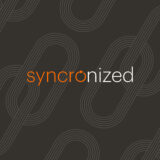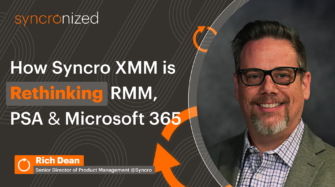Remote monitoring and management (RMM) is a staple for small MSPs. Its ubiquity in the MSP industry has made RMM software table stakes for competing in most markets.
That’s because RMM software addresses two fundamental MSP use cases: endpoint monitoring and IT asset management.
The benefits of RMM software for small MSPs
RMM software helps ensure your clients’ IT assets are secure, up to date, and operational while limiting costly manual labor. Key benefits of RMM for small MSPs include:
- Reduced labor costs through automation and remote assistance
- Faster mean time to resolve (MTTR) when something goes wrong
- Detection of minor issues before they become major incidents
- Increased monthly recurring revenue (MRR) as you discover and onboard more assets
- Better visibility into what hardware and software refreshes your clients need
In short, RMMs improve your status as a trusted advisor to your clients and help make you more productive, proactive, and profitable.
Choosing the best RMM for a small MSP
Without an RMM, your small MSP is at a competitive disadvantage. But it isn’t as simple as picking the first solution that seems to check most of your boxes.
Each RMM feature and use case comes with a lot of technical and operational nuance. Even when there’s feature parity, how one RMM does things can be significantly different than how another does. And if the tool’s how isn’t aligned with your business needs, productivity will suffer.
And it’s worth noting that selecting an RMM tool isn’t strictly a technical decision. In fact, it’s primarily a business decision that should be informed by technical considerations.
To land on the best RMM for your small business, you need to find the sweet spot where you’re getting the best return on investment (ROI) over the long term.
Here are 7 business considerations to keep in mind.
1/ Size and complexity
An extensive list of features looks compelling when you’re comparing RMMs. After all, who doesn’t want more features? But that can be a slippery slope without context.
There are four essential premises to consider here:
- There’s no-one-size-fits all RMM. RMM platforms have a feature set designed to address the needs of a particular target market. Any specific user may only leverage a subset of those features or need features the RMM lacks.
- Most MSPs will drive the most value from a core set of RMM features. In many cases, particularly for small MSPs, the Pareto Principle applies: a small subset of features will deliver most of the value. Home in on those core features. It’s important to avoid the trap of “nice-to-have” features you’ll use one day if you can’t justify the cost today.
- More features generally means more complexity. More features also come with more complexity across the system as a whole. In some cases, RMMs are so complex they come with paid onboarding and require external consultants to get off the ground.
- Complexity impacts user experience and user experience directly impacts productivity. If your RMM is too complex, it can confuse your technicians. Those “nice-to-have” features will likely go unused and getting the “must-have” features optimized for your use case can wind up being more time-consuming than they should be.
All that considered, what’s a small MSP to do? To paraphrase Einstein, your RMM should be as simple as possible but no simpler. Find the balance of features and complexity that help you drive business outcomes.
2/ Pricing model
There are two common approaches to RMM pricing models:
- Per-endpoint pricing: You’re charged based on each endpoint your RMM monitors.
- Per-user (per-technician) pricing: You’re charged based on the number of technicians that use the RMM.
The per-endpoint pricing model effectively penalizes landing larger clients and having more productive technicians. This can make an RMM less cost effective as you scale. For example, suppose your RMM enables automation that allows a single technician to go from managing 100 to 500 endpoints. That’s great for operational efficiency, but your RMM costs may increase up to 5x too.
Conversely, per-user pricing incentivizes effective automation and doesn’t penalize bringing on larger clients. You simply purchase more licenses as you onboard more technicians.
3/ Contract terms and vendor lock-in
While research is important, there’s nothing like putting an RMM to the test in your MSP business. Sometimes, you may not realize the tool isn’t right for you until you’ve used it for a few months. Some RMM’s require long-term (up to 3 years) contract terms.
These long-term contracts risk locking you into a tool well after you realize it isn’t right for the job. Contractless subscriptions without long-term commitments keep your business agile and incentivize the RMM vendor to continuously deliver value to their customers to avoid churn.
4/ Integrations
An RMM is an essential MSP software product, but it’s far from the only software an MSP business needs. Regardless of how well a standalone RMM works, tool sprawl creates complexity and bottlenecks in MSP operations. This means the right integrations matter too.
Additionally, an RMM integrated with PSA software can seamlessly tie together your MSP’s IT and business operations. Tightly coupling RMM and PSA features can be one of the single biggest efficiency boosters for a small MSP.
5/ Product support
RMM software is a key part of your role as your clients’ trusted advisor. Ensuring you have access to responsive and accurate support for your RMM can make a big difference for your clients. Judging support quality can be tricky, but here are a few key questions to ask:
- Does the RMM have an active online community? In addition to vendor support communities, check forums like Reddit and Facebook Groups to get a feel for how active community members and vendor reps are when it comes to support.
- What type of support does the vendor offer? Can you call someone in an emergency? Is there online chat support? Ticketing? Email?
- Does support come with a cost or is it free? If support comes with a cost, be sure to consider that cost when comparing vendors.
6/ Onboarding
Some RMMs are straightforward to install and scale. Others are so complex they require external consultants and paid training for initial onboarding. The costs may be justifiable for larger businesses, but for many small MSPs, they’re an unnecessary expense.
In some ways, paid onboarding can be a double whammy from a business perspective. Not only are you paying an additional fee to get your RMM off the ground, but the complexity of a system that requires paid onboarding can also create bottlenecks on “day 2” after the consultants—and corresponding specialized knowledge—are gone.
7/ Social proof: Partner reviews and rankings
Nothing beats trying an RMM for yourself. However, the next best thing is hearing from other MSPs who’ve already used it. Start with reviews on sites like these:
Remember that context matters when it comes to reviews. Dig into the comments and look for recurring themes. If you want to go deeper, check out industry forums like r/msp to see what other MSPs are saying about the software you’re considering.
RMM features
After all the business considerations have been carefully weighed, you’ll still want to look at technical features, of course. For a list of key RMM features and how to assess them, download our free RMM Buyer’s Guide.
Share














